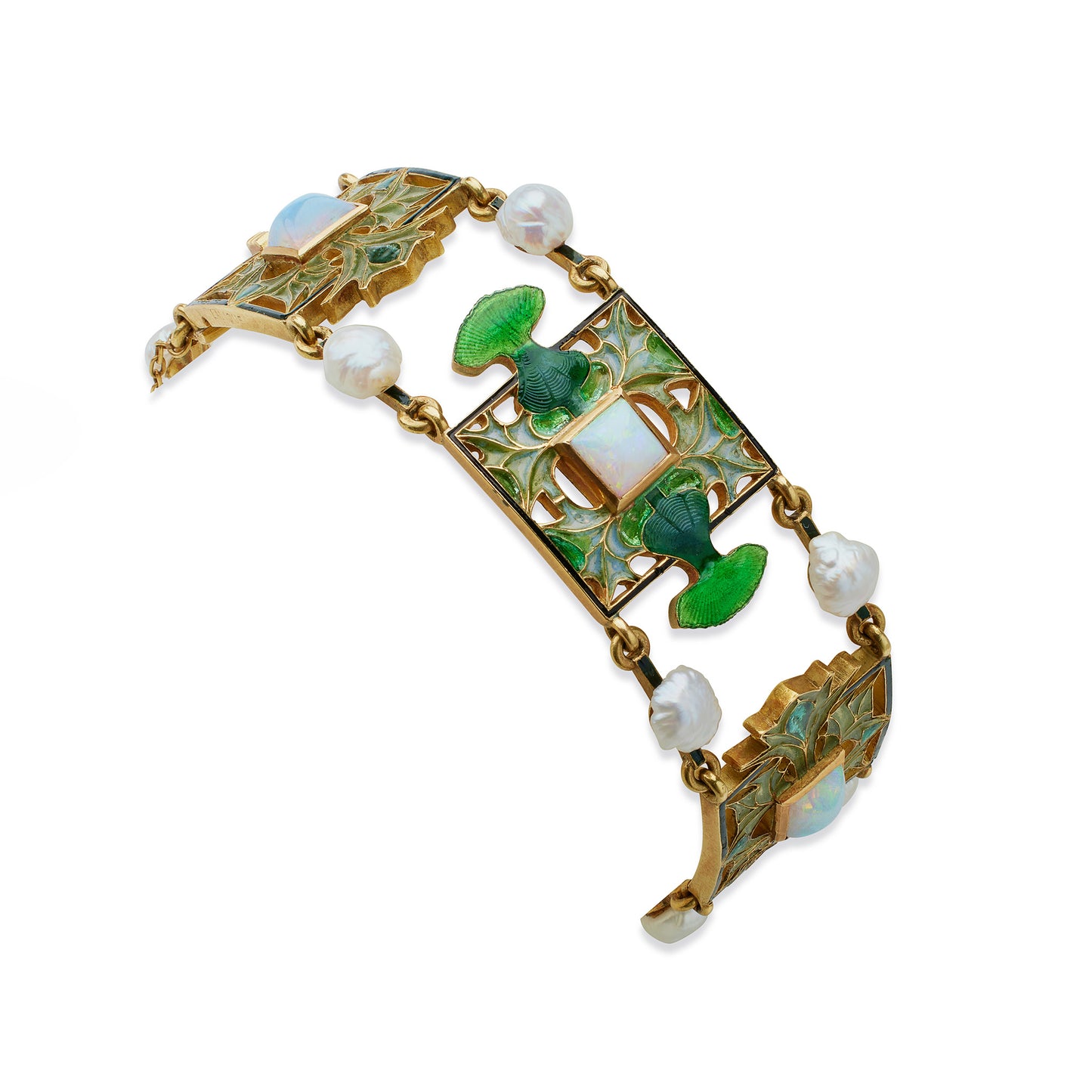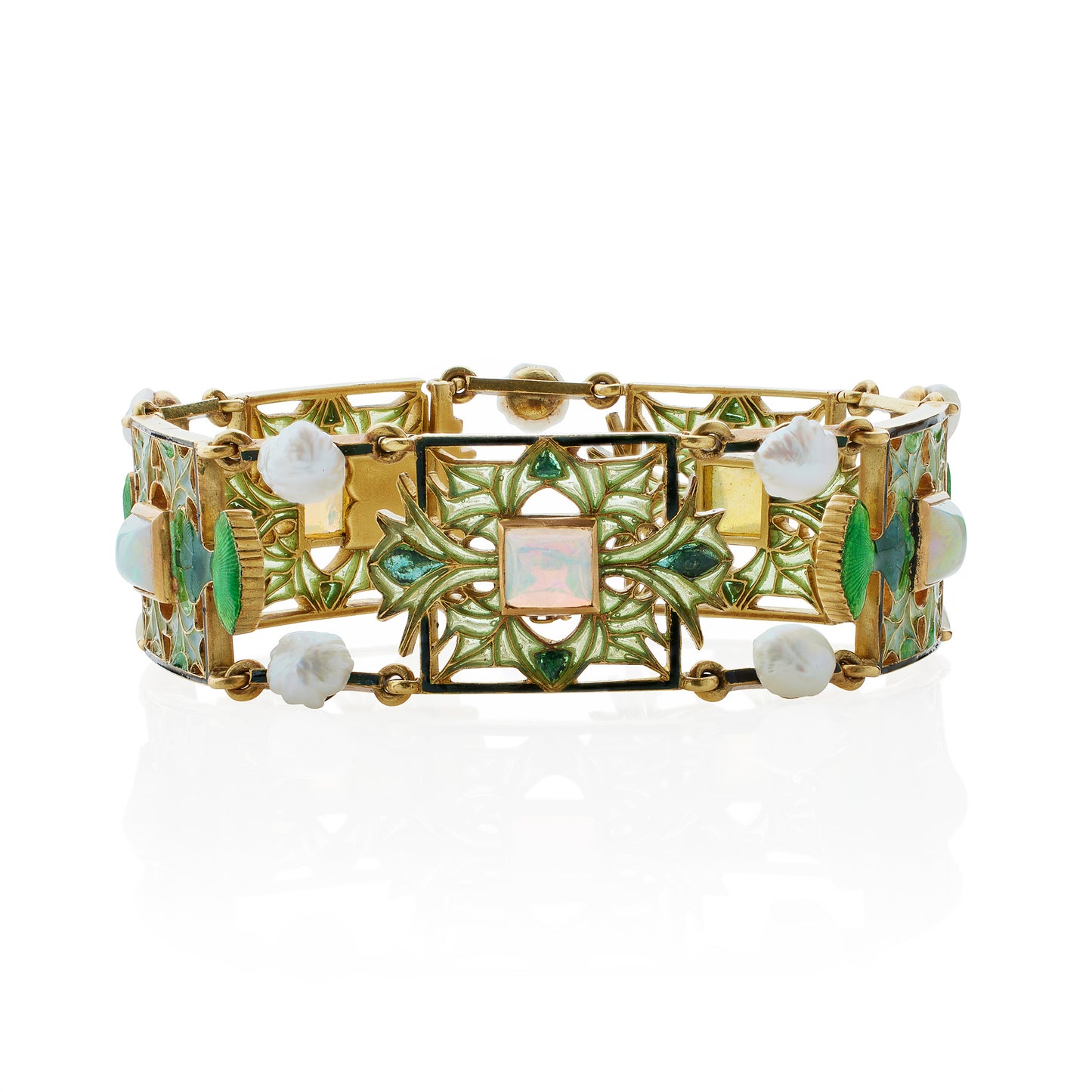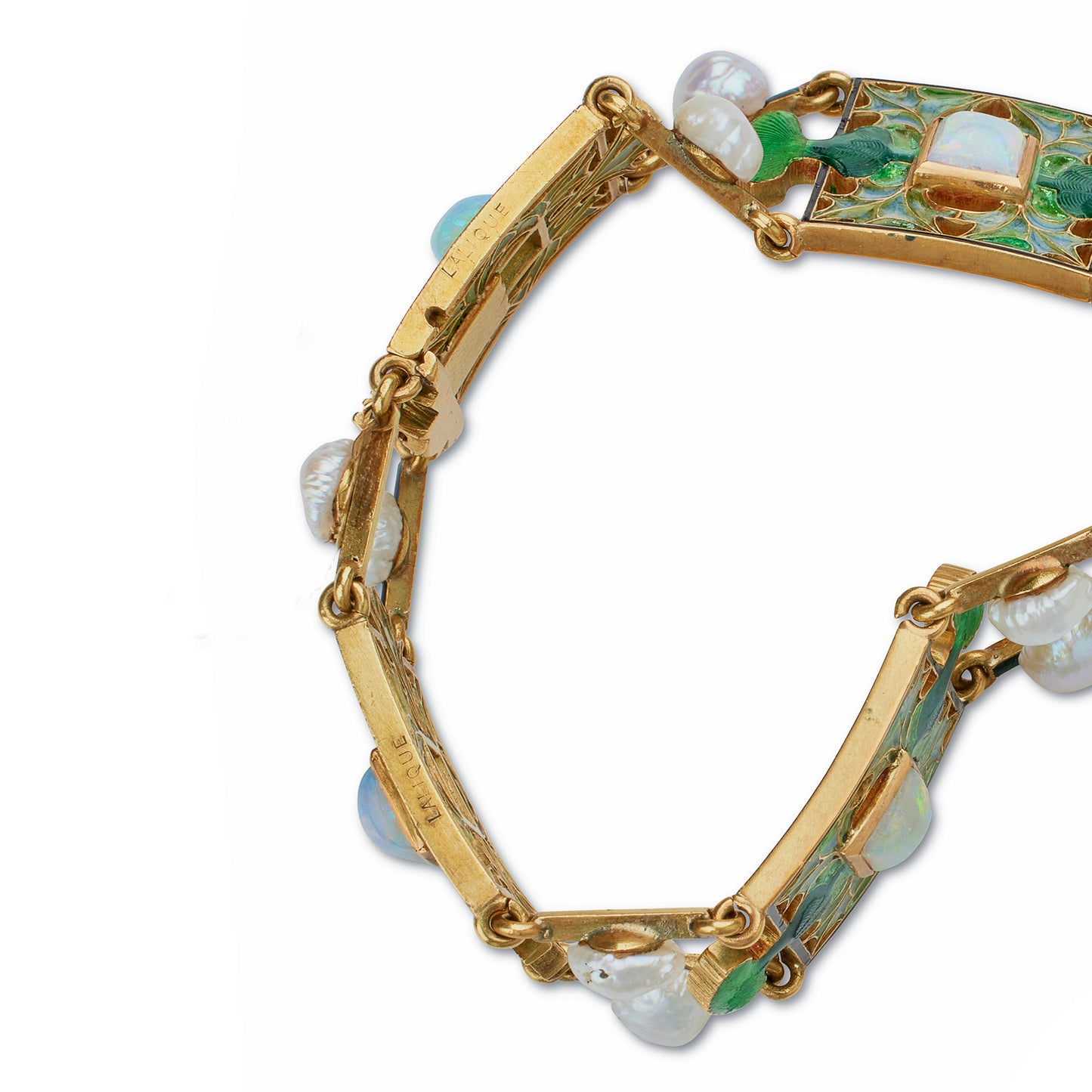René Lalique "Thistle of Lorraine" Bracelet
Item #: BA-21366
Artist: René Lalique
Country: France
Circa: 1901-1903
Dimensions: 6.75" length.
Materials: 10 baroque freshwater pearls; 5 square cabochon opals; Plique-à-jour and basse-taille enamel; 18K Gold
Signed: LALIQUE
Literature: A bracelet of this design appears in "Jewels of Lalique" by Yvonne Brunhammer, p. 188.
Item #: BA-21366
Artist: René Lalique
Country: France
Circa: 1901-1903
Dimensions: 6.75" length.
Materials: 10 baroque freshwater pearls; 5 square cabochon opals; Plique-à-jour and basse-taille enamel; 18K Gold
Signed: LALIQUE
Literature: A bracelet of this design appears in "Jewels of Lalique" by Yvonne Brunhammer, p. 188.






















